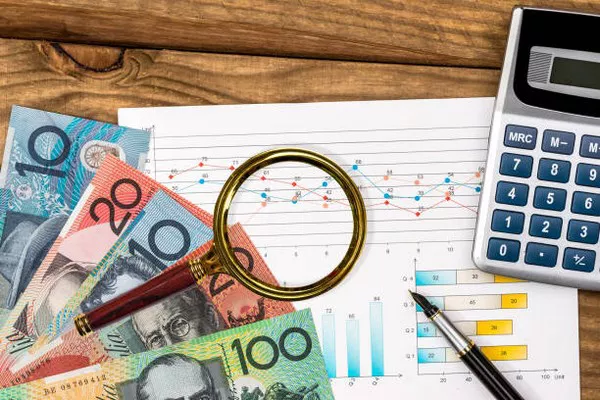Australia, with its rich history and diverse culture, has produced a plethora of banknotes over the years, each telling a unique story of the nation’s economic evolution. From the classic designs of the pre-decimal era to the modern polymer notes in circulation today, Australian banknotes hold both historical significance and monetary value. Whether you’ve stumbled upon a stash of old notes or are curious about the worth of a family heirloom, understanding how to value old Australian banknotes is essential. In this comprehensive guide, we’ll explore the key factors that determine the value of these notes and provide you with the knowledge to assess their worth accurately.
1. Historical Significance and Rarity
Unveiling the Stories Behind Old Banknotes
Australian banknotes reflect the country’s economic and social history, making them invaluable artifacts for collectors and enthusiasts. Each design change, portrait alteration, or security feature enhancement marks a significant moment in Australia’s monetary landscape. For instance, pre-Federation banknotes issued by various colonial banks are highly sought after due to their scarcity and historical importance. Similarly, commemorative notes and limited edition releases often command premium prices in the collector’s market.
Rarity: A Decisive Factor
The rarity of a banknote plays a pivotal role in determining its value. Factors such as circulation numbers, printing errors, and withdrawn designs contribute to a note’s scarcity. Notes from smaller issuing authorities, limited print runs, or those with unique serial numbers are typically more desirable among collectors. Furthermore, the condition of the note significantly influences its rarity value, with well-preserved specimens fetching higher prices at auctions and exchanges.
2. Condition and Grading
Assessing the State of Preservation
The condition of a banknote is paramount in evaluating its value accurately. Factors such as creases, folds, tears, stains, and discoloration can significantly detract from its worth. Numismatic experts employ a standardized grading scale to assess the condition of banknotes, ranging from “Poor” to “Gem Uncirculated.” A note in pristine condition, free from any imperfections or signs of handling, is classified as “Uncirculated” and commands a premium in the market.
Grading Services and Certification
Professional grading services offer authentication and grading for banknotes, providing collectors with assurance regarding the authenticity and condition of their acquisitions. Organizations such as the Professional Coin Grading Service (PCGS) and the Numismatic Guaranty Corporation (NGC) employ experienced numismatists who meticulously examine and grade banknotes according to established criteria. Certified notes carry a greater level of trust and often realize higher prices in the secondary market.
3. Rarity and Demand
Understanding Market Dynamics
The value of old Australian banknotes is subject to fluctuations in demand and market trends. While certain notes may be abundant in circulation, their desirability among collectors can drive prices upwards. Conversely, notes with low mintage figures or those featuring iconic designs may command premium prices despite their scarcity. Market demand for specific series, denominations, or signatures can influence pricing dynamics, with collector preferences shaping the trajectory of valuations over time.
Market Research and Comparative Analysis
Conducting thorough market research and comparative analysis is essential for accurately valuing old Australian banknotes. Online auction platforms, numismatic forums, and specialized publications provide valuable insights into recent sales, price trends, and collector preferences. Studying historical auction records and price guides enables collectors to gauge the relative rarity and demand for specific banknotes, facilitating informed decision-making in buying, selling, or trading endeavors.
4. Authentication and Verification
Guarding Against Counterfeits
With the proliferation of advanced printing technologies, counterfeit banknotes pose a significant threat to collectors and investors. Authentication methods such as ultraviolet (UV) light examination, watermark verification, and microscopic analysis are employed to detect counterfeit notes. Consulting reputable numismatic experts or utilizing professional authentication services mitigates the risk of purchasing fake or altered banknotes, ensuring the integrity of one’s collection.
Legal Considerations
In compliance with Australian law, it is imperative to ensure the legality of acquiring, owning, and selling old Australian banknotes. Certain banknote series may be subject to restrictions or prohibitions due to their historical significance or cultural heritage. Familiarizing oneself with relevant legislation and seeking guidance from legal professionals or regulatory authorities safeguards against potential legal complications and ensures ethical conduct in numismatic pursuits.
FAQs
1. Can I still use old Australian banknotes as legal tender?
No, old Australian banknotes that have been demonetized are no longer accepted as legal tender. However, collectors and enthusiasts value these notes for their historical significance and rarity.
2. How can I determine the authenticity of old Australian banknotes?
Authenticity can be verified through various means, including examination of security features, comparison with known genuine specimens, and consultation with experienced numismatists or authentication services.
3. Are there any restrictions on owning or trading old Australian banknotes?
While there are no specific restrictions on owning or trading old Australian banknotes, collectors should be aware of legal considerations regarding the acquisition and sale of certain rare or historically significant banknotes.
4. What should I do if I suspect a banknote in my possession is counterfeit?
If you suspect that a banknote is counterfeit, refrain from circulating it further and seek assistance from law enforcement authorities or professional authentication services for verification.
5. Can damaged banknotes retain value?
The value of damaged banknotes depends on the extent of the damage and the rarity of the note. While heavily damaged notes may have diminished value, certain rare specimens retain significant worth even in less-than-perfect condition.
SEE ALSO What Is The Highest Currency In Australia?
In conclusion
valuing old Australian banknotes requires a nuanced understanding of historical context, rarity, condition, market dynamics, and authentication methods. By leveraging these insights and resources, collectors and enthusiasts can navigate the intricate world of numismatics with confidence and precision. Whether preserving family heirlooms, expanding collections, or making informed investment decisions, the appreciation of Australian banknotes transcends mere monetary value, encapsulating the rich tapestry of the nation’s heritage and culture.


